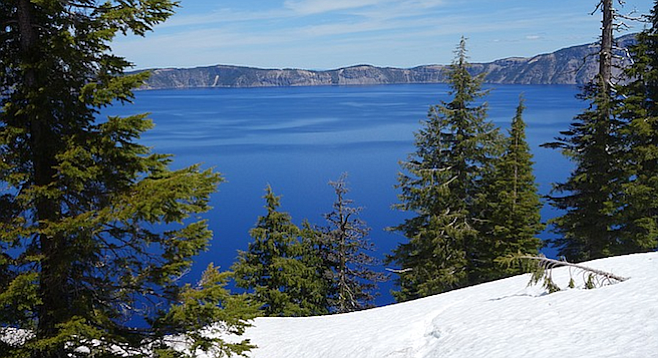Chemical Analyses of Waters from Crater Lake, Oregon, and Nearby Springs
by J. Michael Thompson, L. Douglas White and Manuel Nathenson
Abstract
Crater Lake, Oregon, has no surface outlet and loses its inflow by evaporation and leakage. In order to understand the hydrology of the lake and the leakage of the lake in relation to nearby cold springs, water samples were collected for chemical and isotopic analyses. No spring analyzed had evidence of more than ten percent Crater Lake water. One spring, Crater Spring, has higher than usual chloride concentrations and slightly heavier isotopes than average meteoric water. If these are caused by Crater Lake water, then the calculated fraction of Crater Lake water is near seven percent. Chemical and isotopic analyses show that Crater Lake is well mixed. Crater Lake also has anomalously high chloride, boron, lithium, sulfate, and silica concentrations compared to nearby Diamond Lake and to cold springs discharging on the flanks of Mount Mazama. This elevated chloride may be caused by input of thermal water. Weight ratios of Cl/Li are within the range of western United States hot springs and significantly below those for surrounding cold spring waters. Estimates of total heat flow out of the lake bottom range from 670 to 1380 mW/m2, also suggesting addition of thermal water to the lake bottom.


